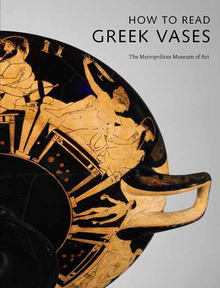How to Read Buddhist Art
WARNING
You are viewing an older version of the Yalebooks website. Please visit out new website with more updated information and a better user experience: https://www.yalebooks.com
Kurt Behrendt
An indispensable introduction to the evolution of Buddhist imagery from its origins in India through its spread to China, Japan, and South Asia
For more than 2,000 years, sublime works of art have been created to embody essential aspects of Buddhist thought, which developed and evolved as its practice spread from India to East Asia and beyond. How to Read Buddhist Art introduces this complex visual tradition to a general audience by examining sixty seminal works. Beginning with the origins of representations of the Buddha in India, and moving on to address the development of Buddhist art as the religion spread across Asia, this book conveys how Buddhist philosophy affected artistic works and practice across cultural boundaries.
Reliquaries, sculptures, and paintings produced in China, the Himalayas, Japan, Korea, and South and Southeast Asia provide insight into the rich iconography of Buddhism, the technical virtuosity of their makers, and the social and political climate in which they were created. Beautiful photographs of the artworks, maps, and a glossary of the major Buddhist deities offer an engaging and informative setting in which readers—regardless of their familiarity with Buddhism—can better understand the art related to the religion’s practices and representations.
For more than 2,000 years, sublime works of art have been created to embody essential aspects of Buddhist thought, which developed and evolved as its practice spread from India to East Asia and beyond. How to Read Buddhist Art introduces this complex visual tradition to a general audience by examining sixty seminal works. Beginning with the origins of representations of the Buddha in India, and moving on to address the development of Buddhist art as the religion spread across Asia, this book conveys how Buddhist philosophy affected artistic works and practice across cultural boundaries.
Reliquaries, sculptures, and paintings produced in China, the Himalayas, Japan, Korea, and South and Southeast Asia provide insight into the rich iconography of Buddhism, the technical virtuosity of their makers, and the social and political climate in which they were created. Beautiful photographs of the artworks, maps, and a glossary of the major Buddhist deities offer an engaging and informative setting in which readers—regardless of their familiarity with Buddhism—can better understand the art related to the religion’s practices and representations.
Published by The Metropolitan Museum of Art/Distributed by Yale University Press
Kurt Behrendt is associate curator in the Department of Asian Art at The Metropolitan Museum of Art.
ISBN: 9781588396730
Publication Date: January 7, 2020
Publishing Partner: Published by The Metropolitan Museum of Art/Distributed by Yale University Press
Publication Date: January 7, 2020
Publishing Partner: Published by The Metropolitan Museum of Art/Distributed by Yale University Press
136 pages, 8 x 10 1/2
110 color illus.
110 color illus.
ADDITIONAL MATERIALS













